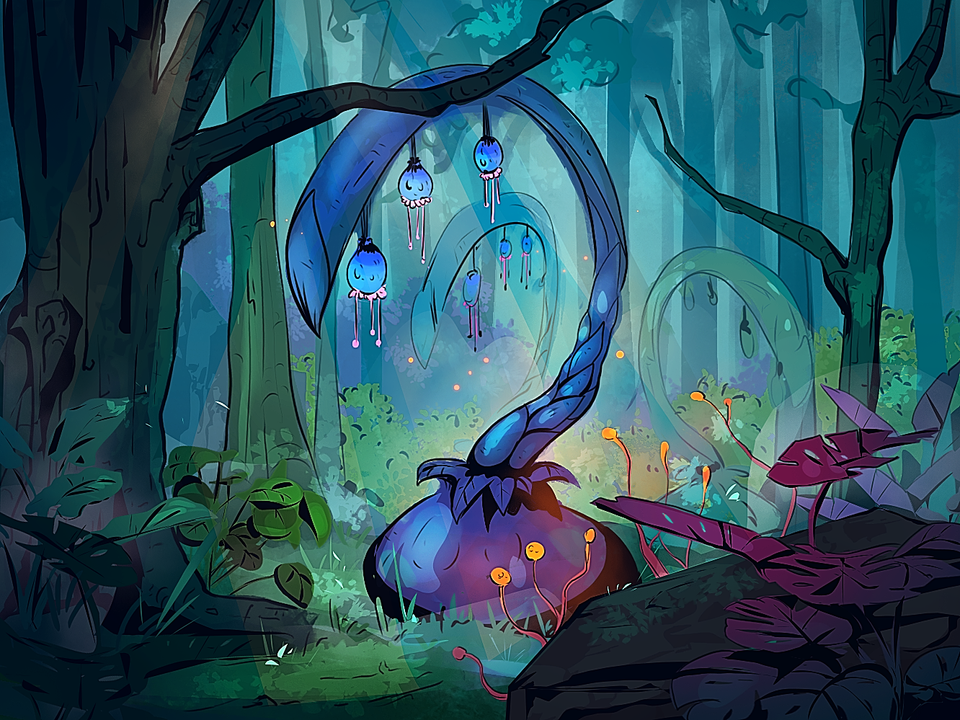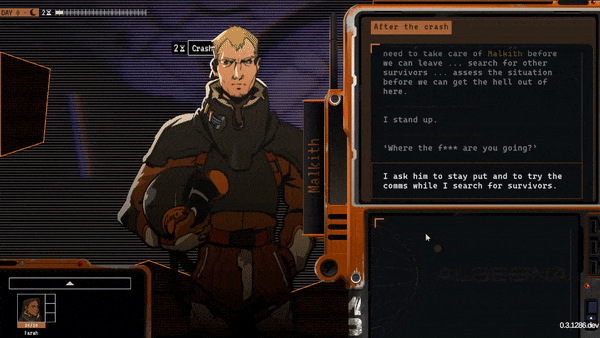Looking for your seed

Seed: A starting point concept that is reflected through all aspects of the game.
Dollsofgod on Youtube (I honestly couldn't do it any better)
The concept of a seed (or 'graine' in French) has stuck with me since Derek Sakamoto's GDC talk about Hearthstone's UI in 2015 (time flies so fast).
Yet, when I set out to write this article, I struggled to find other sources. We often hear about the core, or "pillars," but these concepts usually leave out artistic direction.

A seed, simply put, is a central concept that serves as a foundation for the entire game, though its scope is usually limited to artistic direction. In reality, the best seeds will feed and influence game design (and thus your core).
While the two concepts seem close, and feed each other, a distinction is made between them.
The seed should support your core concept. It could be considered part of the "Declarative layer”
A seed can be one of your pillars and might even be the core of your game, depending on the importance you place on visual and auditory ambiance (eg. something really artsy like Dordogne).
This seed is what will enable you to answer all the questions and doubts you'll have during development, creating a cohesive whole.
Need to design a UI element? Choose a piece of music, or unsure about a piece of dialogue? Just refer back to your seed, and you'll find your answer.
Having a good seed is a major advantage
Ensuring this visual and auditory coherence will create a virtuous cycle, facilitating production while also creating depth that naturally strengthens the game's diegesis.
A favorite example of mine; the music from Citizen Sleeper, composed by Atmos Roddy, which he says - "should seem like it was composed and played by the residents of the station.”

But the seed also impacts the "depth" of your ideas; by bypassing or accelerating preliminary research stages, you quickly achieve quality results while also having more time to iterate on them.
I’ll finish by quoting Derek again about the importance of a good seed:
I makes everything better. It makes everything fit and feel like it's one thing.
I think your must find it. If you want to have to have it shot and your game be something special, have it have a true vision, I think you need to find it.
Some examples
In Hearthstone, the seed is the box that contains the game board. I'll let you watch the conference - Derek will explain it better than I can.
Alien: Isolation chose cassette futurism to stay true to the original film.


Alien : Isolation uses its seed everywhere it can. From the screen effects (grain) to its color palette and its ui.
A classic case, with a strong seed and a team that had the means to fully utilise it, even going as far as recording CRT screens for the UI.
Against the Storm uses... the storm (surprise!), which is both the game's core and its artistic seed. A chicken-and-egg story, it's hard to tell how much the seed influenced the core and vice versa, but what’s certain is that a good seed transcends artistic direction.
It will generate new gameplay ideas or solutions to problems you thought were insoluble. You just have to pull the thread.

Unsurprisingly, your game's marketing relies heavily on its visuals; gifs, screenshots, and trailers are essential components of communication (more so than its storyline, music, and sometimes gameplay).
Keeping the marketing potential of your seed in mind never hurts, even if it should not become your ultimate goal.
How to find your seed
As Derek (yes, him again, but he’s really good) says so well:
The path to your seed is never direct, unless your are lucky or a super genius - of which we are neither.
It took him and his team numerous iterations to find their seed during the pre-production phase. And we’re talking about Blizzard in 2015!
I sure don't have the perfect solution, but here are some methods and principles that helped us find Neoproxima’s seed:
- If you already have an artistic direction and assets, take the time to analyse them. Your seed might already be somewhere in your project.
- Have a clear vision in your head? Clarify it, put words on it.
The day we discovered "Cassette futurism" at Lonestone, the whole team was relieved. - If you don’t have one, brainstorm. Start with gameplay elements that work, and those that don’t.
Have a character with vampiric powers that works really well? Maybe the vampire theme could make a good seed. - Above all, go in directions that please your creative team (you, if you’re alone). Don’t make the mistake of choosing a seed you don’t like, even if it’s super original on paper or could be great for marketing.
You're going to work on your project too long to stay forcibly inspired. - A picture is worth a thousand words: create visual (and sound) boards. Search the internet for images, photos, movie or series clips. Bombard your board with Gifs.
You want a unique game, but there’s nothing wrong with seeking inspiration. Trust me, use white boards. - Pull on the seed to see what inspiration comes out; when you find the right one, everything seems easier and naturally falls into place.
Test it by applying it to lingering questions (enemy design, level design, UI, etc.); does it make answering these questions easier?
Does everything seem simpler? If so, you might have a winner! - Move from brainstorming to producing. Produce mockups as quickly as possible.
This is the most difficult phase, requiring the most experience. Don’t immediately aim for a “target render”; the goal is to test whether the concept takes hold and inspires you.
Take a look at Hearthstone's tests, and you’ll see they’re far from a final rendering!
What if I don't have a seed?
You have worked several days/weeks/months, and you’re still not 100% convinced by your seed?
It can be a long process, and not all seeds are equal. Sometimes you have a stroke of genius, sometimes not. With unlimited resources, nothing is impossible, but not all studios have Blizzard's means, and it’s crucial not to obsess over it: you can perfectly release a game that succeeds with a moderately inspired artistic direction.

And like all game design concepts, the concept of a seed is a beautiful theory; a short phrase, a concise concept, and you have the magic recipe for your game.
In reality, you might never be able to put words on your seed, which will be defined only by a stack of images. Or you might find it during production, through several creations by your team.
If your DA is cool and you like it - or it simply fulfills its function well - don’t tear your hair out!
Neoproxima's seed
Finding a seed can sometimes be a Herculean task, and Neoproxima was no exception, especially since the project underwent a major pivot (a story for a future article). It took us over a year to finally find the right one!
Some mistakes made along the way:
- Not iterating quickly enough. Our processes and organization didn’t always allow us to efficiently explore several directions simultaneously.
The pre-production phase is an intense period of creation, requiring significant focus - which I didn’t always have as a creative director, due to my role as co-founder of Lonestone. - Sticking too long to a moderately convincing idea. At this stage, "if it's not a clear yes, it's a no”: quickly discarding ideas is as important as testing new ones quickly!
- Trying to be original at all costs. One of our first seed attempts was "Greek solar punk" for a space adventure game! It was indeed original, but not necessarily convincing. No need to try to reinvent the wheel.
- Focusing too much on marketing. Originally, Neoproxima was meant to be a mobile and multiplayer game, which led us towards less original propositions, fearing not being mainstream enough.
We eventually gently shifted towards a well-known trope, not particularly original (but one I’m a big fan of): cassette futurism.
